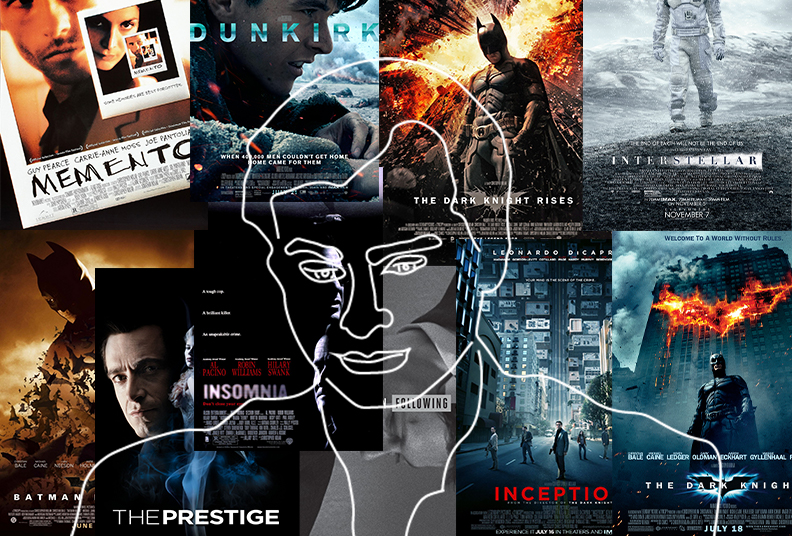How Christopher Nolan compresses character emotion and time
by Ryan Tressler

Christopher Nolan, known for such masterpieces as The Dark Knight Trilogy, Inception, Interstellar, Memento, The Prestige, and Dunkirk—seem to have perfected the art of modern cinematic storytelling for the big screen. He is best known for his intricate, detailed, and sometimes highly confusing plotlines that reward careful and attentive viewers with ‘aha’ moments when discovering a plot twist, understanding a flashback, or finding the film’s message in the bottle.
This often happens in his now legendary montage sequences.
According to the EB, cinematic montage is the “editing technique of assembling separate pieces of thematically related film and putting them together into a sequence.” Nolan uses montages for many reasons and in many different ways. For example, he uses a montage to build a character arc in The Dark Knight Trilogy, to powerfully end a film as he does in Memento, and to draw out a specific theme such as the one in Dunkirk. However, one of Nolan’s most prominent and powerful montage sequences stems from his desire to draw out a specific and powerful emotion from a character.
One such example occurs in the first film of the Superhero trilogy: Batman Begins.

This montage effectively condenses the entirety of Bruce’s training with the league of Shadows into two minutes. Rather than showing the physical portion of the training, Nolan focuses on the mental maturation. Different aspects of the training always cut back to Bruce and Ra’s sword fighting on the ice to keep the focus not just on Bruce’s physical development but on his emotional growth. Bruce must overcome the guilt and trauma of his parents’ deaths, for which he feels responsible. This montage provides the backstory and the beginning of what will become ‘The Batman.’ Nolan repeats this theme of overcoming fear throughout all three of the films, using other such “montages of the swarming bats and their screeching occur as traumatic memories whenever he is beset by fear…” (The cinema of Christopher Nolan: imagining the impossible). Nolan uses the montage sequence to compress the time of this maturation from two months into two minutes.
Perhaps Nolan’s most emotional film, Interstellar is a sci-fi thriller that ultimately focuses on love and family. Nowhere are these themes more evident than in the montage sequence where Cooper watches the missed messages from his family over the twenty-three years that he missed while on the planet for only a few hours.
Here, Nolan takes a non-traditional approach. Rather than it being a traditional montage for the film watcher, the viewer instead watches Cooper watch a montage of the video log. With the help of Hans Zimmer for the score, Nolan masterfully crafts a heart-wrenching scene that leaves Cooper in tears. Zimmer’s piece ‘S.T.A.Y.’ has a repetitive flow to it with the organ dominating the piece in a minor key, allowing the dialogue to be clearly heard. Nolan syncs the music up so that as soon as the video stops, the music cuts out – signifying the emptiness and loneliness that Cooper feels. Once again, Nolan uses another example of “the psychological afflictions of his male protagonists, who variously experience flashbacks…emotional damage [that] often stem from grief or guilt” (Grief, Amnesia, and Traumatic Memory).
Frequently, Nolan centers his movies around the theme of time – how it changes, how it can be altered, or how it can be reversed – and through the use of this montage, he portrays the immensity of this loss of time.
In Nolan’s Inception, the main character Dom Cobb suffers from the trauma of his wife’s suicide, and, as a result, experiences many flashbacks of memories with her. Throughout Inception, Cobb and his team infiltrate other people’s dreams to extract information and also implant ideas into the minds of people without their knowledge. While dreaming, Cobb finds the ability to interact with his children (who he is currently unable to visit) and deceased wife. Nolan intertwines the two, with “the film persistently [invoking] Cobb’s memories of his children and his deceased wife, both through flashbacks in his waking reality and in his dream states… [and therefore]… there is also constant uncertainty about whether he is experiencing a dream” (Representing Trauma Pg. 14).
With these thoughts in mind, let’s take a look at the ending in Inception. The question of whether or not Cobb is dreaming answers itself with the use of a spinning top. When spun, it will eventually stop in the real world but keep spinning forever in his dream world. The film ends with Cobb spinning his top right before being reunited with his children; the screen then goes black before the audience has a chance to see if it stops or not, leaving the answer unclear. Nolan not only plays with his characters’ emotions, but here he enjoys teasing the viewer’s.

Because Nolan specializes in playing with time – stopping it, compressing it, and speeding it up – often displaying his characters’ emotions at the forefront of these time-warped sequences, perhaps one of his most emotionally potent montage comes near the end of Interstellar where seventy-five plus years pass while Cooper is in space saving the world, and yet he only ages a few months. When he awakes on Cooper Station, a space habitat orbiting Saturn, he learns that Murph, his daughter, is on her deathbed soon to pass away due to old age. The film’s closing montage not only captures how Nolan takes the pairing emotion with time to another level, but does so by playing on the convention of a quasi-cinematic life review experienced by characters before their death.
This montage shows Cooper and Murph reconnecting one last time before she passes away. The scene then cuts to clips of Cooper getting ready to venture on a rescue mission to save Brand, who is stranded on the planet Edmunds. A voiceover of Murph is heard speaking to him during these frames. Within this short montage, Nolan captures the love between father and daughter, the love between man and humanity, and the connection between Cooper and Brand.
Though the film deals with complex scientific methods, interstellar travel, and multi-dimensional worlds, the core of its meaning lies in humanity’s unwavering love and connection amid a powerful commitment to survive. Nolan realizes that emotions are not unlike matter; when condensed, they may encapsulate an entire period of one’s life, whether it is just a brief memory or a cosmic interval.
Christopher Nolan has achieved remarkable success due to his masterclass films. Through the use of montage, he elevates them to another level. These examples are just the tip of the iceberg when it comes to what makes his film’s so spectacular – take a look at the storytelling, soundtrack, and cast to see why they are treasured so much as well.